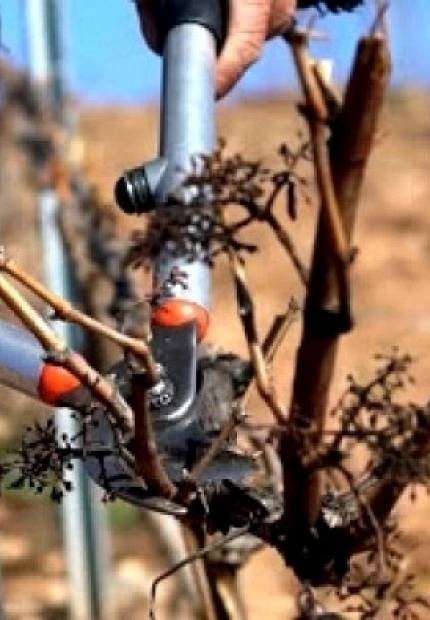The importance of vine pruning
Vine pruning is a fundamental art and science in viticulture, which significantly influences the quality and quantity of the grape harvest. Here I present an extended version of vine pruning:
**The Importance of Pruning in Viticulture: Strategies and Benefits**
Vine pruning is an ancient agricultural practice that consists of manipulating the vine to control its growth, maximize the quality of the grapes and maintain the health of the plant. This work, carried out during the winter dormancy period of the vine, is crucial for the performance and longevity of the vineyards.
**Pruning Objectives**
The primary objective of pruning is to regulate the growth of the vine, control its vigor and direct its energy toward the production of high-quality grapes. By selectively eliminating certain parts of the plant, such as shoots, branches and leaves, the aim is to optimize sun exposure, air circulation and nutrient distribution, key factors for the development of grapes.
**Types of Pruning**
There are several pruning methods, among the most common are training pruning, maintenance pruning and renewal pruning. Training pruning is performed in the initial stages of vine growth to establish its basic structure. Maintenance pruning is carried out annually to regulate growth and control grape production, while renewal pruning is used to revitalize old vineyards, removing old wood and promoting the growth of new shoots.
**Pruning Techniques**
Pruning techniques vary depending on the wine region, the type of vine, and the winegrower's preferences. Pruning can be "short" or "long", referring to the amount of buds left on the shoots. In addition, different pruning systems are used, such as Guyot pruning, cordon pruning, trellis pruning and glass pruning, each with its own advantages and adaptations to the specific conditions of the vineyard.
**Effects of Pruning on Grape Production**
Proper pruning can significantly influence grape production. An excess of shoots can result in an abundant harvest but of lower quality, since the vine disperses its energy in too many clusters, reducing the concentration of sugars and other compounds key to the flavor and maturity of the grapes. On the other hand, insufficient pruning can cause uncontrolled growth, making ventilation and sun exposure difficult, which increases the risk of diseases and affects the quality of the fruit.
**Environmental and Economic Considerations**
In addition to influencing the quality of the grapes, pruning can also have environmental and economic effects. Proper vine management through pruning can reduce the need for pesticides and fungicides, thus promoting more sustainable practices in viticulture. Furthermore, by optimizing the quality of the harvest, the commercial value of the wines produced can be increased.
**Conclusion**
In summary, vine pruning is an essential practice in viticulture that goes beyond simple manipulation of the plant. Its correct application and understanding of the vital principles of the plant are essential to obtain quality grapes, maximize production and promote sustainable practices in the wine industry. Pruning is not only an art passed down from generation to generation, but also a constantly evolving science that continues to improve the quality of wines around the world.
#lapodadelavid #lapoda #vinodetoro #vinodeautor #montetorowine #montroro8 #vinomontetoro #tardencubawines #vinotardencuba #bodegaramonramos #montetoro #vinepruning

